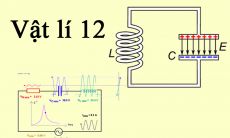Read the following passage and mark the letter A, B, C, or D on your answer sheet to indicate the correct answer to each of the questions from 39 to 45
Basic to any understanding of Canada in the 20 years after the Second World War is the country's impressive population growth. For every three Canadians in 1945, there were over five in 1966. In September 1966 Canada's population passed the 20 million mark. Most of this surging growth came from natural increase. The depression of the 1930s and the war had held back marriages, and the catching-up process began after 1945. The baby boom continued through the decade of the 1950s, producing a population increase of nearly fifteen percent in the five years from 1951 to 1956. This rate of increase had been exceeded only once before in Canada's history, in the decade before 1911, when the prairies were being settled. Undoubtedly, the good economic conditions of the 1950s supported a growth in the population, but the expansion also derived from a trend toward earlier marriages and an increase in the average size of families. In 1957 the Canadian birth rate stood at 28 per thousand, one of the highest in the world.
After the peak year of 1957, the birth rate in Canada began to decline. It continued falling until in 1966 it stood at the lowest level in 25 years. Partly this decline reflected the low level of births during the depression and the war, but it was also caused by changes in Canadian society. Young people were staying at school longer, more women were working; young married couples were buying automobiles or houses before starting families; rising living standards were cutting down the size of families. It appeared that Canada was once more falling in step with the trend toward smaller families that had occurred all through the Western world since the time of the Industrial Revolution.
Although the growth in Canada's population had slowed down by 1966 (the increase in the first half of the 1960s was only nine percent), another large population wave was coming over the horizon. It would be composed of the children of the children who were born during the period of the high birth rate prior to 1957.
Câu 39 : What does the passage mainly discuss?
Suy nghĩ và trả lời câu hỏi trước khi xem đáp án
Lời giải:
Báo saiGiải thích:
Đoạn văn chủ yếu bàn luận về gì?
A. Canada trong Chiến tranh Thế giới Thứ hai
B. Mức sống ở Canada
C. Sự thay đổi về giáo dục ở xã hội Canada
D. Xu hướng dân số Canada thời hậu chiến
Thông tin:
Basic to any understanding of Canada in the 20 years after the Second World War is the country's impressive population growth. (Sự hiểu biết cơ bản về Canada trong 20 năm sau Thế chiến thứ hai chính là sự tăng trưởng dân số ấn tượng của nước này.)
→ Đoạn văn nói về xu hướng dân số Canada sau Thế chiến thứ hai
→ Chọn đáp án D
Câu 40 : The author suggests that in Canada during the 1950's _____?
Suy nghĩ và trả lời câu hỏi trước khi xem đáp án
Lời giải:
Báo saiGiải thích:
Tác giả chỉ ra rằng ở Canada trong suốt những năm 1950 thì ________.
A. dân số đô thị tụt giảm nhanh chóng
B. tỷ lệ sinh rất cao
C. điều kiện kinh tế rất tệ
D. ít người kết hôn hơn
Thông tin: The baby boom continued through the decade of the 1950s, producing a population increase of nearly fifteen percent in the five years from 1951 to 1956.
(Sự bùng nổ em bé đã bắt đầu trong suốt thập kỷ của những năm 1950, khiến dân số tăng lên gần 15% trong vòng 5 năm từ năm 1951 đến 1956.)
→ Chọn đáp án B
Câu 41 : The word trend in paragraph 1 is closest in meaning to _____.
Suy nghĩ và trả lời câu hỏi trước khi xem đáp án
Lời giải:
Báo saiGiải thích:
Từ “trend” trong đoạn 1 đồng nghĩa với từ ______.
A. tendency (n): xu hướng
B. aim (n): mục tiêu
C. growth (n): sự tăng trưởng
D. directive (n): chỉ thị
Trend (n): xu hướng, xu thế = tendency
→ Chọn đáp án A
Câu 42 : The word peak in paragraph 2 is closest in meaning to _____.
Suy nghĩ và trả lời câu hỏi trước khi xem đáp án
Lời giải:
Báo saiGiải thích:
Từ “peak” trong đoạn 2 đồng nghĩa với từ ______.
A. maximum (adj): tối đa
B. dismal (adj): ảm đạm
C. mountain (n): núi
D. pointed (adj): nhọn
Peak (adj): đỉnh điểm = maximum
→ Chọn đáp án A
Câu 43 : The author mentions all of the followings as causes of declines in population growth after 1957 EXCEPT _____.
Suy nghĩ và trả lời câu hỏi trước khi xem đáp án
Lời giải:
Báo saiGiải thích:
Tác giả nhắc đến tất cả những điều sau như là nguyên nhân gây giảm tăng trưởng dân số sau năm 1957 ngoại trừ ________.
A. các cặp đôi mua nhà
B. mức sống tốt hơn
C. mọi người kết hôn sớm hơn
D. mọi người được giáo dục tốt hơn
Thông tin: Partly this decline reflected the low level of births during the depression and the war, but it was also caused by changes in Canadian society. Young people were staying at school longer, more women were working; young married couples were buying automobiles or houses before starting families; rising living standards were cutting down the size of families. (Một phần sự giảm sút này phản ánh mức độ sinh thấp trong suốt thời kỳ suy thoái và chiến tranh, nhưng nó cũng do sự thay đổi của xã hội Canada. Những người trẻ học ở trường lâu hơn, nhiều phụ nữ đi làm hơn; những cặp đôi trẻ kết hôn mua xe ô tô hoặc nhà cửa trước khi bắt đầu lập gia đình; mức sống cao hơn làm giảm quy mô gia đình.)
→ Chọn đáp án C
Câu 44 : It can be inferred from the passage that before the Industrial Revolution _____.
Suy nghĩ và trả lời câu hỏi trước khi xem đáp án
Lời giải:
Báo saiGiải thích:
Có thể suy ra từ đoạn văn rằng trước cuộc Cách mạng Công nghiệp thì _______.
A. thống kê dân số không đáng tin cậy
B. dân số tăng trưởng đều đặn
C. gia đình lớn hơn
D. điều kiện kinh tế tồi tệ
Thông tin: It appeared that Canada was once more falling in step withthe trend toward smaller families that had occurred all through the Western world since the time of the Industrial Revolution.
(Có vẻ Canada lại một lần nữa rơi vào xu thế hướng đến các gia đình nhỏ hơn đã xảy ra trên khắp thế giới phương Tây kể từ thời kỳ Cách mạng Công nghiệp.)
→ Chọn đáp án C
Câu 45 : The word It in paragraph 3 refers to _____.
Suy nghĩ và trả lời câu hỏi trước khi xem đáp án
Lời giải:
Báo saiGiải thích:
Từ “It” trong đoạn 3 đề cập đến ______.
A. đường chân trời
B. làn sóng dân số
C. 9%
D. nửa đầu
Thông tin: Although the growth in Canada's population had slowed down by 1966 (the increase in the first half of the 1960s was only nine percent), another large population wave was coming over the horizon. It would be composed of the children of the children who were born during the period of the high birth rate prior to 1957.
(Mặc dù sự tăng trưởng dân số của Canada đã chậm lại đến năm 1966 (sự gia tăng trong nửa đầu của thập niên 1960 chỉ là 9%), một làn sóng dân số lớn lại đang sắp xảy đến. Nó sẽ bao gồm con cái của những đứa trẻ được sinh ra trong thời kỳ tỷ lệ sinh cao trước năm 1957.)
→ Chọn đáp án B
Đề thi thử THPT QG năm 2022 môn Tiếng Anh
Sở GD&ĐT Thái Nguyên Lần 2












